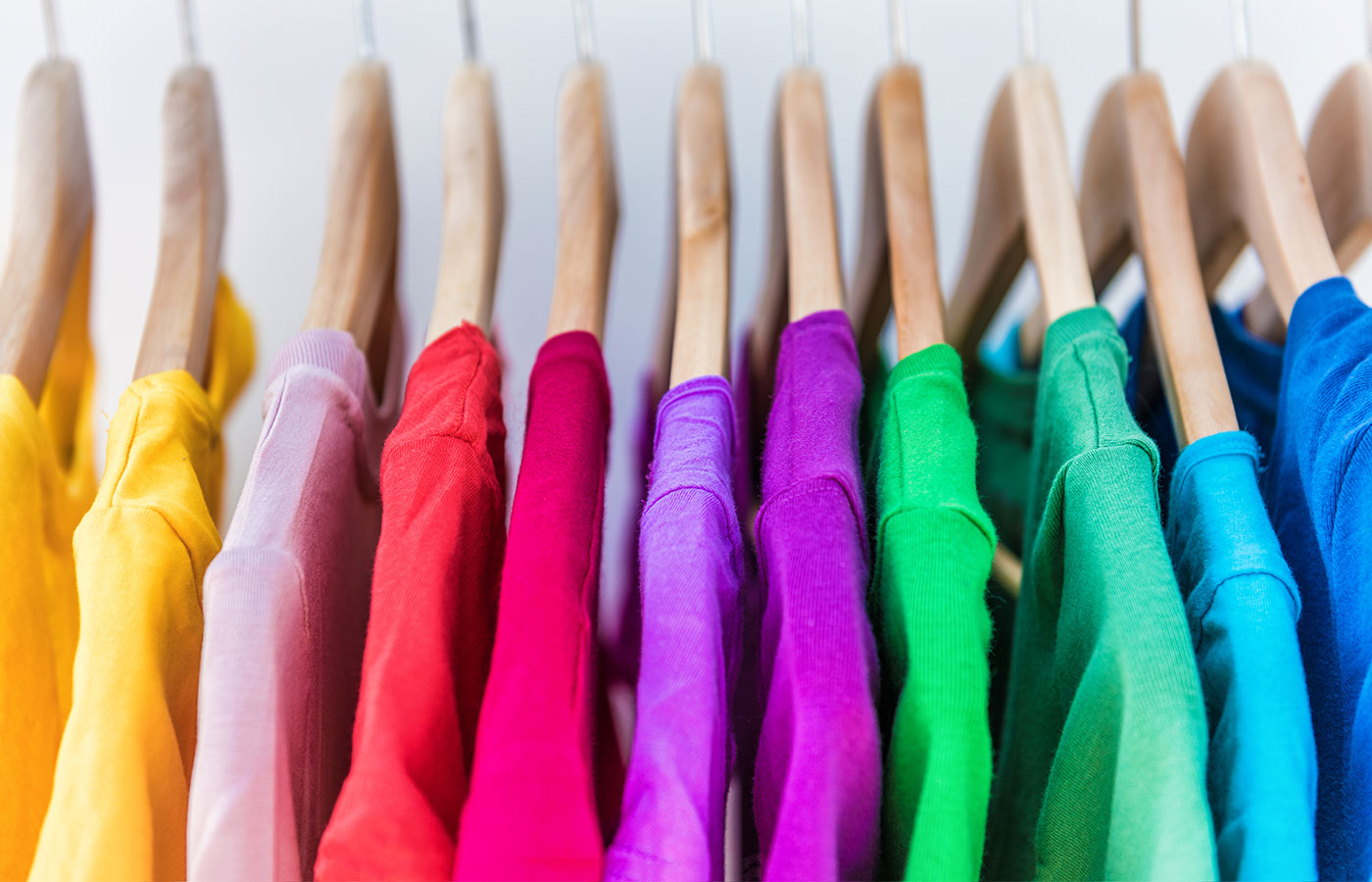Branded Clothing Maintenance Tips Based on Fabric Composition
Branded Clothing Maintenance Tips Based on Fabric Composition
Blog Article
The Value of Sustainable Clothing: How It Influences the Environment and Your Storage room
Sustainable garments is progressively acknowledged for its important role in lessening the ecological effect of the quick fashion business. By concentrating on environmentally friendly products and honest manufacturing techniques, it deals with pressing eco-friendly concerns. This shift not just benefits the planet yet also affects consumer choices, causing an extra thoughtful technique to wardrobe management. Understanding these dynamics raises crucial concerns regarding style's future and individual responsibility in forming it.
The Environmental Impact of Quick Style

Advantages of Sustainable Products
Lasting products use substantial benefits, especially through eco-friendly textile selections that lessen ecological harm. These materials also demonstrate toughness and longevity, lowering the need for regular replacements. As an outcome, they add to an extra lasting apparel industry and promote responsible customer habits.
Eco-Friendly Fabric Choices
While the apparel industry has actually long been connected with fast patterns and ecological damage, the rise of eco-friendly material choices provides a transformative possibility. Sustainable products such as organic cotton, hemp, and Tencel have obtained popularity because of their reduced eco-friendly impact. These fabrics are usually created without dangerous pesticides and call for much less water, reducing their carbon impact - Branded Clothing. Furthermore, several environmentally friendly textiles are naturally degradable, adding to a circular economic situation by decreasing waste. Picking sustainable products not only supports ecologically responsible methods but also promotes much healthier ecological communities. As customers become a lot more familiar with their purchasing power, the demand for environment-friendly materials motivates brand names to introduce and embrace even more lasting production techniques, inevitably benefiting the planet and future generations
Durability and Durability Advantages
Several consumers are increasingly acknowledging the sturdiness and longevity benefits of sustainable products in their clothing options. Unlike standard textiles, lasting materials such as natural cotton, hemp, and recycled polyester are engineered to endure deterioration, resulting in garments that last much longer. This minimized regularity of substitute not only conserves consumers money with time however also lessens waste created by quick fashion. In addition, lasting garments usually employs green manufacturing approaches that enhance fabric toughness, contributing to a reduction in the total carbon footprint. By purchasing sturdy clothes, consumers can cultivate a more lasting wardrobe while delighting in top notch items that keep their aesthetic and capability with time. Toughness and long life stand as vital advantages of picking sustainable products.
Lowering Waste With Sustainable Practices
Lowering waste in the style industry can be accomplished through cutting-edge methods such as upcycling and repurposing materials. Additionally, embracing minimalist closet approaches motivates consumers to focus on quality over amount, ultimately lowering clothes intake. Together, these methods add substantially to a much more sustainable clothing version.
Upcycling and Repurposing Materials
Upcycling and repurposing products have arised as innovative methods in the apparel industry, changing discarded fabrics right into beneficial new items. This approach not just decreases waste however additionally encourages imagination and individuality in clothes layout. By taking old garments and materials, designers can develop distinct items that reflect personal design while lowering the demand for brand-new sources. Additionally, upcycling usually requires less power and water contrasted to traditional manufacturing processes, substantially decreasing the environmental footprint of style. As consumers end up being a lot more familiar with sustainability, the popularity of upcycled clothes proceeds to climb, advertising a circular economic climate. Ultimately, these techniques contribute to an extra sustainable future, where style focuses on ecological wellness over fast manufacturing and usage.

Minimal Wardrobe Techniques
As people progressively look for to decrease their environmental effect, adopting minimalist closet strategies has actually gotten traction as an effective strategy to lasting fashion. These techniques highlight top quality over amount, motivating customers to curate a smaller sized collection of flexible, resilient garments. By focusing on classic items that can be blended and matched, individuals can reduce the regularity of try these out acquisitions and eventually lower waste.Additionally, minimalism advertises mindful intake, urging shoppers to assess the environmental and moral ramifications of their options. This approach not only cultivates an extra sustainable lifestyle yet likewise simplifies day-to-day decision-making pertaining to clothes. As individuals welcome minimalist concepts, they contribute to a style culture that values sustainability and responsible consumerism, inevitably causing a more eco-conscious society.
The Role of Honest Labor in Sustainable Style
While many customers are progressively aware of the environmental consequences of their clothing options, the significance of honest labor practices in lasting style can not be ignored. Ethical labor includes reasonable earnings, secure working conditions, and regard for workers' legal rights, forming the backbone of liable fashion manufacturing. Brand names that prioritize honest labor not just uplift neighborhoods yet also established a standard for responsibility in the industry.Moreover, the integration of honest techniques fosters transparency, allowing customers to make informed selections about their purchases. This technique contrasts greatly with fast fashion's unscrupulous labor versions, which commonly focus on profit over people. By sustaining companies devoted to moral labor, customers add to a system that values human self-respect together with environmental sustainability. Honest labor is not merely an add-on; it is necessary to the more comprehensive objective of sustainable fashion, guaranteeing that the quest for eco-friendliness does not come at the cost of human legal rights.
The Effect of Sustainable Clothing on Carbon Emissions
Lasting garments has the prospective to considerably decrease carbon emissions associated with the fashion industry. Traditional garment manufacturing adds notably to greenhouse gas emissions, largely because of energy-intensive manufacturing procedures and using non-renewable resources. In comparison, sustainable fashion concentrates on green products, such as organic cotton or recycled fibers, which often call for less energy to produce.Moreover, lasting brand names have a tendency to embrace much more effective production methods, minimizing waste and reducing total discharges. By prioritizing longevity and ageless design, sustainable clothing motivates consumers to buy less often, more minimizing the carbon impact related to overconsumption.Additionally, lots of sustainable brands are committed to openness in their supply chains, making it possible for customers to make informed options that align with their values. Inevitably, shifting towards sustainable apparel can result in a substantial reduction in carbon discharges, adding to a healthier earth and a more sustainable future for the apparel industry.
Supporting Regional Economies With Sustainable Selections
The shift toward lasting apparel not only addresses environmental concerns however additionally check over here considerably benefits regional economic climates. By choosing sustainable style, customers typically support tiny businesses and local artisans, enhancing community durability. These business commonly operate on a smaller sized range, focusing on workmanship and honest methods over mass production.Investing in locally made sustainable garments cultivates task creation and promotes financial growth within neighborhoods. As customers become extra familiar with the ecological influence of their acquisitions, they significantly seek out items that reflect their values. This demand urges local suppliers to adopt lasting techniques, adding to a circular economy.Moreover, supporting neighborhood organizations reduces transport exhausts, lining up with eco-conscious consumer behavior. The interconnectedness of lasting garments and regional economic climates underscores the crucial duty that private options play in promoting both financial and ecological health. By cultivating these neighborhood links, neighborhoods can thrive while likewise working in the direction of a more sustainable future.
Changing Your Closet: Tips for a Lasting Closet
As individuals seek to reduce their ecological effect, changing a wardrobe into a lasting wardrobe comes to be an essential action. One efficient approach is to examine existing clothing, maintaining only products that are put on consistently and that straighten with sustainability goals. Prioritizing quality over amount is essential; purchasing durable items from environmentally friendly brand names can significantly decrease waste.Additionally, incorporating second-hand things can revive a closet while minimizing ecological damages. Organizing clothing swaps with good friends or donating unused products can better promote sustainability.When buying, people need to seek materials that are natural, recycled, or eco-friendly, and avoid rapid fashion merchants - Branded Clothing. Finally, practicing mindful usage by attentively taking into consideration each purchase can contribute to a much more lasting way of living. By implementing these ideas, one can develop a closet that mirrors personal design while sustaining ecological stewardship
Often Asked Concerns
How Can I Identify Sustainable Garments Brands?
To determine lasting garments brands, one must investigate products go used, look for qualifications like Fair Profession, and take a look at the brand name's openness concerning their manufacturing procedures, labor techniques, and ecological impact, guaranteeing green and moral techniques are prioritized.
What Are the Costs Linked With Lasting Fashion?
The costs associated with lasting fashion can vary substantially. Greater production costs, honest sourcing, and environmentally friendly materials frequently lead to raised list prices, which may deter some customers while attracting eco aware consumers.
Can Sustainable Garments Be Trendy and Trendy?
Lasting clothes can indeed be elegant and trendy. Designers progressively prioritize ingenious materials and honest manufacturing techniques, proving that fashion and sustainability can coexist. Customers now have diverse alternatives that mix looks with environmental awareness.
Just How Does Washing Garments Affect Their Sustainability?
Cleaning clothes considerably impacts sustainability by consuming water and energy, adding to pollution, and creating microplastic release. Constant washing can break down fabrics, shortening their life-span and enhancing the demand for replacements, inevitably intensifying ecological concerns.
What Is the Life Expectancy of Lasting Clothes Contrasted to Rapid Fashion?
The life expectancy of lasting clothes commonly surpasses that of rapid fashion products, commonly long-term several years as a result of quality materials and craftsmanship. On the other hand, quick fashion garments might break down promptly, demanding even more constant substitutes. Lasting clothing is increasingly recognized for its vital function in minimizing the ecological effect of the quick fashion industry. While lots of customers are significantly mindful of the environmental repercussions of their clothing choices, the significance of moral labor methods in lasting fashion can not be neglected. Branded Clothing. Sustainable apparel has the prospective to significantly reduce carbon emissions connected with the fashion market. In contrast, lasting fashion focuses on environment-friendly products, such as organic cotton or recycled fibers, which frequently call for less power to produce.Moreover, lasting brands have a tendency to take on extra effective manufacturing practices, decreasing waste and decreasing general emissions. By prioritizing resilience and timeless layout, sustainable clothes urges customers to purchase much less often, further lowering the carbon footprint associated with overconsumption.Additionally, several sustainable brand names are devoted to transparency in their supply chains, making it possible for consumers to make enlightened choices that line up with their values
Report this page